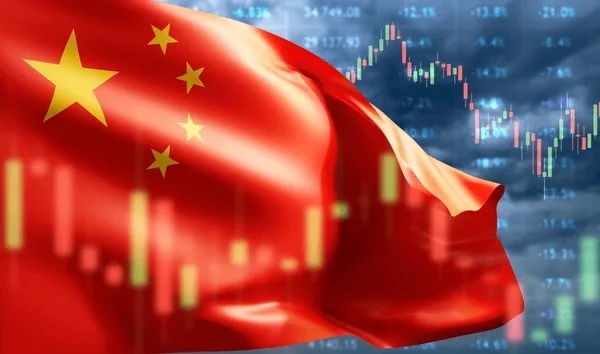Introduction
The impact of China on the Global market is like the steady currents of a giant river making changes in settings around the world of trade and commerce. Among all the countries, China is the biggest exporter accounting for the world’s largest supply. Its effects are the utmost and can be felt in all the corners of the world The “Made in China” icons are to be found everywhere around the world, marking products found in homes, businesses, and even in the industry, a tramp-stamp of China’s illustrious manufacturing history. Using the tech scenario, it is evident that China is the key player. A range of electronic goods, from low-end smartphones to high-end laptops, come with the tags of engineering and fabrication made in China. Brand names such as Huawei, Xiaomi, and Lenovo have become known around the world and portray China as a viable contender to more tech-dominant countries. On the other hand, influential e-commerce brands such as Alibaba and JD. com has disrupted the way people shop online – not only for Chinese consumers but also for those from around the world, bridging borders with their online shops.In the same way, China’s service exports also turn out to be notable in every way. Chinese travelers in their force of plenty and desire for discovery, redefine the world on their path and leave their monetary impetus everywhere. Education, finance, and tourism industries all have China’s outbound travelers as their market segments and so, the establishments in countries across the world tailor the products and services to attract these spending tourists. The rivalry of the Chinese RMB which is increased in the international arena is also another reason for the growing in stature of China. Being promoted to be used as the official currency in cross-border trades will further push the RMB into the light as an integral part of the world’s trade and capital flows. The RMB becoming one of the IMF’s baskets of trade currencies is a milestone signifying China’s arrival as a whole new global financial power. Nevertheless, there are obstacles which are, for example, trade conflicts or issues of intellectual property that befall China’s engine, but they only add to the rhythm of its economic growth.
China’s Substantial GDP
In the global economy, the word “behemoth” apparently was made for someone, and since 2024 it fits China perfectly, what with its $16 trillion GDP for the year. This immense sculpture not only demonstrates China’s economic prowess, but also serves a purpose of influence that transforms the ways trading, investments, and consumer behaviors ensue globally .China which is the second most developed economy in the world, plays a serious role in shaping the rate of global growth. Largely, the position of a currency in forex markets determines commodity prices also the exchange rate of a currency when touching more borders and more continents .The echoes of China’s GDP performance are heard everywhere in the world, as products with a “made in China” label are an endemic reflection of its global supply chains. Manufacturing ingenuity not only ignites the engine of China’s economy, but also provides the foundation which leads to the expansion of international trade, and resulting in lowered prices of goods, thus enabling the masses to acquire quality commodities at an affordable amount.In addition, China can prove itself as an inventive modern technology leader. Companies like Alibaba, Tencent, and Huawei, lead the transformation of those technologies that communicate beyond the borders. Further, as an example, Alibaba’s Singles’ Day event in 2023 alone, with more than 80 billion dollars of sales in 24 hours only, highlights the world its huge Chinese consumer market and digital ability.
Becoming an increasing consumer power on a global scale has been greatly facilitated by the fact of China’s growing middle class. With a transformation in consumer behaviors and advancement of wealth, China is becoming a critical market for luxury products from Paris fashion of the highest level to high-end electronics, therefore giving the leading rhythm to fashion trends and demands of the world level.
The Renminbi’s globalization based on the internationalization of the Chinese economy provides additional power to China in the world arena. To reduce the usage of the traditional currency standard by using its currency for trade and investment, China looks for non-standard intermediaries of trade. The USA had indeed risen to the number one global payment currency as of 2023. By the end of 2023, that means that Renminbi had just surged to become the world’s fourth most-used payment currency. The language tends to be more succinct and more direct.
Besides the broader picture of the inner workings of global economics, China is standing out, becoming a formidable force, by its manufacturing might, advanced technology rankings, and the gradually expanding consumer market which shape our understanding of global trade and investment patterns. Let us explore the collective rays of China’s economic sun and the manner they continue to resonate over the world.
Manufacturing Powerhouse
China’s remarkable manufacturing sector plays that part of its economic mightiness like a beacon with its share reaching even 28% in 2023 out of the total world manufacturing production. The iconic “Made in China” sign is in a lot of products: electronics, clothes, and others, being parts of the global supply chain enveloping the entire world. Along with pointing out the robust manufacturing sector that is pushing China’s economy forward and exerting an immense influence on consumer prices on a global scale, it is of utmost importance to also address the negative consequences of this trend. Through the reduction in production cost, some manufacturing sector gains efficiency as a result. Therefore, the consumption tendencies of the consumers are being driven and the affordability of these consumers is improving.
In addition to this, China can be credited with the development of manufacturing in sectors that had not been previously associated with them. It is the world’s leader in the manufacturing of solar panels, wind turbines, and electric cars that spur the global transition to solutions that are based on sustainable energy. Take an example, in 2023, China produced almost 75 % of the world’s solar panels as well as 50 % of electric cars which has helped the country to be a dominant player in clean technologies.
Tech Sector Dominance: With Google, Amazon, and Apple advocating for a radically different future, China is a sleeping giant with players like Alibaba, Tencent, and Huawei at the helm prowess to craft their future.
In the digital age, China’s technology succeeded in going global having brought together a lot of innovations that refuse any barrier. Such companies as Alibaba, Tencent, and Huawei not only pushed China into the lead but also were the drivers of the tech evolutional wave. Alibaba, the e-commerce giant, single-handedly dominated the 2023 Singles’ Day sales of more than $83 billion in just 24 hours, which qualifies it as a superpower of the consumer population and magnifies the Chinese e-commerce platforms at the global level.
China’s lead in terms of 5G technology neither deployment nor adoption rates is no doubt proof of China’s high level of tech adeptness. Beyond impacting the way industries function within China, 5G has also set standards worldwide making this a revolution that will potentially revolutionize how we live. As an example, China Mobile, China Telecom, and China Unicom as a whole installed nearly $800k 5G base stations by the end of last year, which served as a solid basis for the imminent coming of fast connectivity and innovations.
TikTok,’ a popular app developed by Bytedance, is an instance of China’s digital sways. China’s TikTok went viral when it reached over 1.2 billion worldwide downloads, helping to demonstrate that its technology creations can be of significance and influence on a global scale.
China’s Biggest Consumer Power, Embraces Global Products
The consumers in China, who helped transform this country into a highly prized target market for global brands and their work have left the demand for the whole range of goods and services on the rise. The emergence of the middle class in the country with an expanding disposable income and changing lifestyles has contributed to this trend and has become a major force in the shaping of global consumption patterns. China has become an increasingly important player in the global luxury goods market, having held a market share of about 20% in 2023. Sizeable brands like Louis Vuitton and Gucci have a lot of attention to this country.
With time, the emerging middle class figures out that imported goods are a must leading to further acceleration of global consumption patterns. Wine at a premium price range together with high-end electronics and luxury automobiles is the most sought-after product thus promoting international companies to take advantage of China’s large population to earn their profits.
The rise of the RMB (Renminbi, China’s currency) as an International Currency is the new change in the global money system that put China in a leading position of financial empire. However, China is planning to use its currency, the RMB, in international trade and investment, which will ultimately lessen the reliance on the dollar and other US dollar-based currencies. In 2022, the RMB’s share of global payments achieved a milestone by reaching the highest level of usage since 2015, which was enough to overtake the Japanese yen to become the fourth most popular payment currency across the world.
The opening of the Yuan creates a twofold effect on the hegemony of China’s economy since it first strengthens the impact of China and then offers an additional option (to diversify) to businesses and investors across the globe. Under the umbrella of the ongoing opening up of its capital markets as well as promotion of the global RMB use in overseas transfers, the RMB inevitably will see its global validation rise.
Belt and Road Initiative (BRI): Not only were they able to add value but also cohesion throughout the vast territories that were being explored by voyagers from different nations. BRI, which is constructed by the so expansive and genial China, proves the fact that the country is a promoter and supporter of the process of global connectivity with economic cooperation. By late 2023, more than 140 countries and international bodies looked forward to cooperative accords within the BRI front, illustrating the plan’s sweeping extent and clout. The proposal is the investment net is a comprehensive plan with port, railway, and energy projects spread over different continents which not only the growth and prosperity of partner countries but also has the market for Chinese products and services.
Beyond its main achievement, the BRI has a larger strategic significance, which has to do with infrastructure development. It in addition can enhance cultural exchange, create people-to-people contacts, and ensure sustainable growth hence building a more integrated and conjoined world economy.
Conclusion
China’s GDP output Not just quantity matters, but the country’s economy as well. This has made China a “Made in China” international industrial hub, which is an adornment of almost every product globally. The country’s technology sector leadership is spearheaded by the giants Ali baba, Huawei, and others, and the economic capabilities of China reach far and wide. The fact that more and more income groups can afford it and want to buy costly things and imported products indicates that China is playing an important part in the world market. With an emerging consumer base, this fuel not only the consumption trends worldwide but opens the door for businesses to offer more entrepreneurship opportunities around the world.
Also as the RMB is becoming an international currency something that has not happened before, therefore it underpins China’s establishment as a global financial power. RMB became the world’s fourth most-active currency by the end of 2023, which reflects the increasing significance of China on the international stage and the growing financial markets due to its diversity.
As China’s Belt and Road Initiative (BRI) – the one with its comprehensive network of infrastructure and economics – demonstrates China’s cooperation orientation and efforts to improve global connectedness through its projects and networks. Such a pledge technically stimulates not only the development of national economies of the partner countries but also expands markets of Chinese goods as well as services, ultimately resulting in an integrated global economy.
With the country going through tests such as the trade tension and the geopolitical uncertainties, China’s resilience is worth acknowledging. The changing economic policies and responsiveness to adjustments illustrate the pragmatism and resolve of this country to retain ownership of the member in the emerging global economic system.
The GDP of China in the global markets reflects such attributes as economic growth and power. On the one hand, in the undercurrent of manufacturing progress, innovation technology, the domestic and overseas market, and international finance, China keeps straight ahead in the shape of a global economy. As long as this massive GDP figure is more than just a number, but the symbol of China’s influence, which cannot be erased rapidly after it appears on the international stage. More specifically, China’s footprint in determining the global economic future makes previously existing and forthcoming accomplishments certain.

Mr. Ovais Ali Khokhar is Chairman, Board of Experts, Pakistan Research Center for a Community with Shared Future (PRCCSF), Islamabad.
Chairman, Board of Experts, Pakistan Research Center for a Community with Shared Future (PRCCSF), Islamabad.














